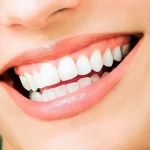What Are the Types of Dental Impression Materials? A Comprehensive Guide
Dental impressions are essential for creating accurate models of a patient's teeth and gums, which are then used to design crowns, bridges, dentures, and other dental restorations. The material used for dental impressions plays a crucial role in the accuracy and comfort of the process. As dental technology has advanced, so have the materials used in taking impressions. Today, dental professionals have several types of impression materials to choose from, each with its own benefits and drawbacks. Whether you’re a patient about to undergo a dental procedure or a dentist looking to expand your knowledge of impression materials, understanding the different types of materials available can help you make the best decision for your needs.
In this article, we’ll explore the various types of dental impression materials, their uses, advantages, and how they contribute to the quality of dental work. From traditional materials like alginate to modern advancements like digital impressions, we will provide a comprehensive overview to help you understand the role of impression materials in dental care. Whether you’re seeking comfort, precision, or a quicker procedure, we’ll help guide you through your options.
1. Alginate: The Traditional Choice for Impressions
Alginate is one of the most commonly used impression materials in dentistry. It’s a fast-setting, flexible material made from seaweed that’s been used in dental practices for decades. Alginate impressions are typically used for creating molds of a patient’s teeth and gums for various procedures, such as creating study models or preparing for dentures and orthodontic appliances. It’s especially popular for use in dental clinics because it is relatively inexpensive and easy to use.
The main advantage of alginate is its flexibility. Once the impression is set, it can be easily removed from the patient’s mouth without causing discomfort or distortion. Additionally, alginate is fast-setting, meaning that the entire process can take just a few minutes, making it an efficient choice for both dental professionals and patients. However, it’s important to note that alginate is not as accurate as some of the more modern impression materials and should be used when high precision is not critical. It’s best suited for preliminary impressions or situations where a quick mold is needed.
1.1 Advantages of Alginate:
- Quick and easy to use
- Flexible and comfortable for patients
- Relatively low cost
1.2 Disadvantages of Alginate:
- Less accurate than other materials
- Can distort if not handled properly
2. Polyvinyl Siloxane (PVS): The High-Precision Choice
Polyvinyl siloxane (PVS) is one of the most advanced impression materials used in modern dentistry. PVS is known for its high accuracy and ability to capture fine details, making it ideal for creating precise molds for crowns, bridges, and other dental restorations. Unlike alginate, PVS sets more slowly and is more rigid, which means it holds its shape better and provides a more detailed impression.
One of the key benefits of PVS is its dimensional stability, meaning it won’t shrink or distort over time. This makes it an excellent choice for situations where precision is essential, such as creating molds for crowns or implants. It is also available in various viscosities, allowing for customization depending on the area of the mouth being worked on. For example, a more fluid PVS material may be used for the impressions of soft tissues, while a thicker version is used for the teeth themselves.
2.1 Advantages of PVS:
- Highly accurate and precise
- Dimensionally stable, resists distortion
- Available in multiple viscosities for various needs
2.2 Disadvantages of PVS:
- More expensive than alginate
- Takes longer to set
3. Polyether: Strong and Durable
Polyether impression materials are another high-precision option used in dental impressions. Like PVS, polyether offers excellent accuracy and stability, but it has a few unique properties that make it particularly suited for certain applications. Polyether is known for its strength and rigidity, making it an excellent choice for creating highly detailed impressions of crowns and bridges, especially when it comes to capturing fine details and undercuts.
However, polyether materials are more rigid than PVS, which means they may be harder to remove from the patient’s mouth, particularly in areas with tight spaces. Despite this, the material is still highly durable and resistant to tearing, which makes it a great choice for impressions that require a high level of durability. Polyether also has a unique property of hydrophilicity, meaning it performs well even in the presence of moisture, which is a common challenge when taking impressions of areas near the gums.
3.1 Advantages of Polyether:
- High accuracy and strength
- Hydrophilic properties, ideal for moist environments
- Durable and resistant to tearing
3.2 Disadvantages of Polyether:
- More rigid, can be uncomfortable to remove
- More expensive compared to other options
4. Digital Impressions: The Future of Dental Molding
While traditional impression materials are still widely used, digital impressions have been making waves in the dental industry as an advanced alternative. Digital impressions utilize specialized scanning devices to capture the details of a patient’s teeth and gums without the need for physical impression materials. This method is quick, non-invasive, and offers unmatched precision, making it an increasingly popular choice in many modern dental practices.
One of the major benefits of digital impressions is the reduction of errors. Traditional materials like alginate or PVS can be affected by factors like moisture or handling, leading to inaccuracies. Digital impressions eliminate this problem, producing highly accurate 3D models that can be immediately viewed and adjusted if necessary. Additionally, digital impressions eliminate the need for impression trays and the messy materials associated with them, making the process more comfortable for patients.
4.1 Advantages of Digital Impressions:
- Highly accurate with minimal risk of errors
- Comfortable and non-invasive
- Quick, with immediate results
4.2 Disadvantages of Digital Impressions:
- Higher initial equipment cost
- Requires specialized training for use
5. How to Choose the Right Dental Impression Material
Choosing the right impression material depends on various factors, including the type of dental procedure being performed, the patient’s needs, and the level of precision required. If you're preparing for a complex procedure like crown placement or implants, a high-precision material like PVS or polyether may be necessary. For simpler procedures, such as creating models for dentures or orthodontics, alginate may be sufficient.
When selecting an impression material, it's also important to consider patient comfort. Materials like alginate are generally more flexible and less rigid, making them easier to remove from the mouth. On the other hand, materials like PVS and polyether may offer better accuracy but can be more rigid, requiring careful handling. Ultimately, consulting with your dentist to determine the best choice for your specific needs is essential.
6. Final Thoughts
Dental impression materials are crucial in achieving the best results for various dental procedures. Whether you choose the traditional comfort of alginate or the high-precision benefits of PVS or polyether, each material offers unique advantages. As technology continues to evolve, digital impressions provide a cutting-edge alternative that enhances both accuracy and patient comfort. No matter which material you choose, understanding the types of dental impression materials available will help ensure that you receive the best possible care for your dental needs.
If you're considering a dental procedure that requires impressions, don’t hesitate to ask your dentist which material would work best for you. The right choice can make all the difference in achieving a comfortable, efficient, and accurate outcome.







 Ideal Smile Dentistry4.0 (135 review)
Ideal Smile Dentistry4.0 (135 review) Waterford Dental Health4.0 (1118 review)
Waterford Dental Health4.0 (1118 review) McCall Family Dentistry5.0 (718 review)
McCall Family Dentistry5.0 (718 review) RiverRock Dental4.0 (157 review)
RiverRock Dental4.0 (157 review) Horton Orthodontics4.0 (426 review)
Horton Orthodontics4.0 (426 review) Plum Grove Family Dental4.0 (87 review)
Plum Grove Family Dental4.0 (87 review) The Importance of Oral Health Education During Pregnancy for a Healthy Pregnancy
The Importance of Oral Health Education During Pregnancy for a Healthy Pregnancy Best Tips for Brushing Your Teeth Properly for Healthy Gums: Essential Techniques for Oral Health
Best Tips for Brushing Your Teeth Properly for Healthy Gums: Essential Techniques for Oral Health Why Skipping Dental Checkups Can Lead to Bigger Oral Health Problems
Why Skipping Dental Checkups Can Lead to Bigger Oral Health Problems Advantages of Porcelain Dental Restorations
Advantages of Porcelain Dental Restorations How Can Diabetes Cause Tooth and Gum Problems? Preventing and Managing Oral Health Issues
How Can Diabetes Cause Tooth and Gum Problems? Preventing and Managing Oral Health Issues Healthy Habits for Promoting Good Oral Health and Hygiene: Tips for a Healthy Smile
Healthy Habits for Promoting Good Oral Health and Hygiene: Tips for a Healthy Smile